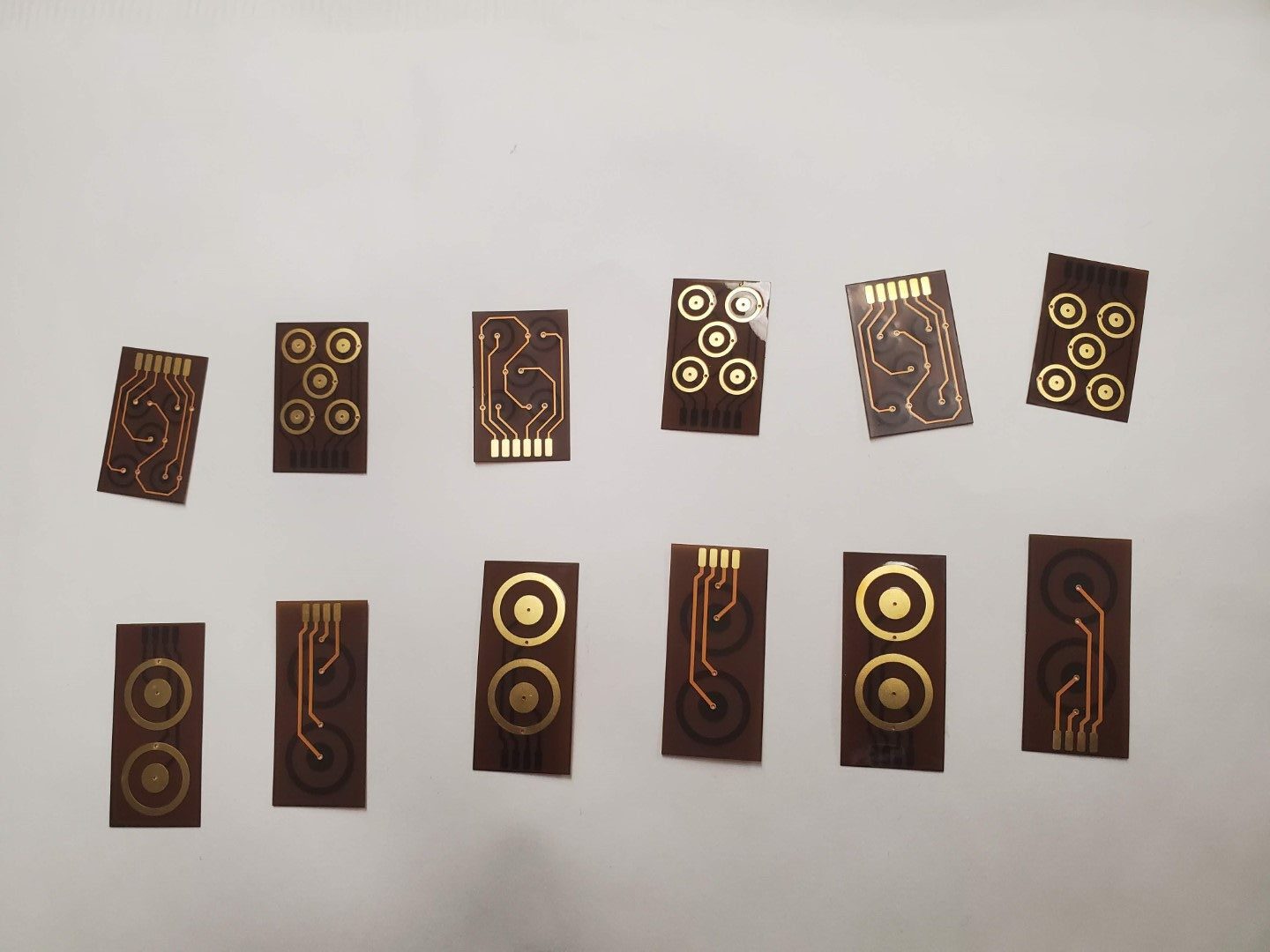A Non-Invasive Wearable Vagus Nerve Stimulator

Introduction
In our neurotechnology class, ME 8287: Design of Neurotechnologies, William Huynh and I embarked on a fascinating project. We were driven by a common goal: to find a non-invasive way to harness the power of the vagus nerve, which is crucial for many automatic functions in our bodies, from speaking to digesting. Vagus nerve stimulation (VNS) using electrical currents has shown promise in treating migraines and Parkinson’s disease1. Traditionally, vagus nerve stimulation (VNS) involves surgery, which comes with risks and high costs associated with invasive procedures. We wanted to push beyond these barriers.
Our solution? A wearable device using cutting-edge flexible electronics and 3D printing. This innovative approach would allow for comfortable, continuous, and surgery-free vagus nerve stimulation—that is what we envisioned.
Design and Fabrication
We succeeded in one crucial part: crafting the flexible electrode PCBs. These PCBs were designed such that focused, low-power stimulation is ensured while maintaining user comfort. The electrode’s unique configuration—featuring concentric rings and bipolar elements—enables precise electrical stimulation with minimal surface current, addressing the core requirements of an effective vagus nerve stimulator. It’s a small, yet significant step toward our goal.
The full vision included integrating these PCBs into a system with a heart – a control unit driven by a microcontroller and a programmable waveform generator. This system was meant to adjust to personal medical needs, with features for automatic detection and data tracking, all while being powered safely by a modern battery setup. We also envisioned wrapping all this technology in a skin-friendly, 3D-printed enclosure, combining comfort with innovation.


Skills
- Circuit Design and Prototyping
- Flexible PCB
- KiCAD
- Project Pitching and Presentation
References
1 Simon, B., Errico, J. P. & Raffle, J. T. Device and methods for non-invasive electrical stimulation and their use for vagal nerve stimulation. (2014).





